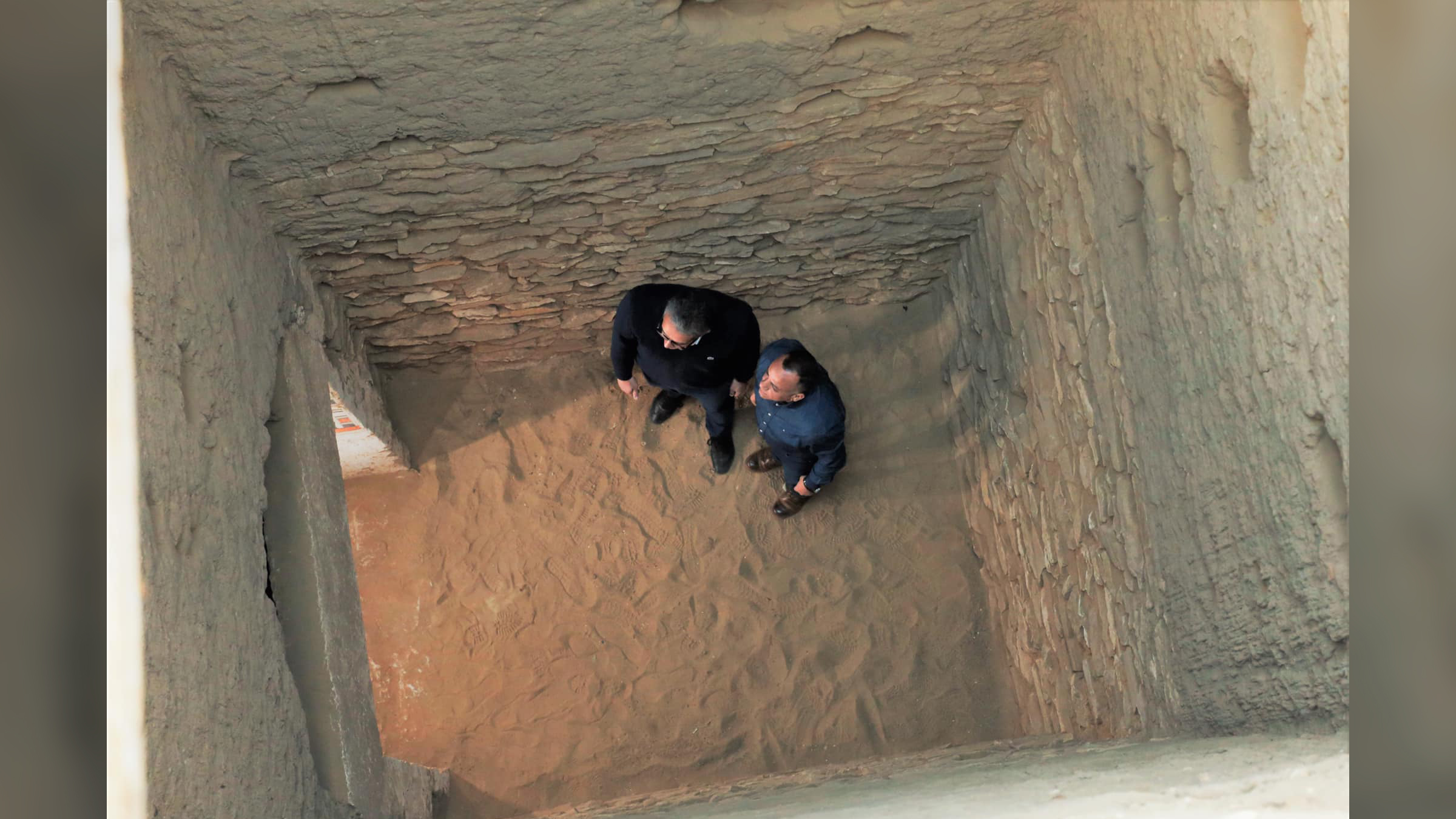5 stunningly preserved ancient Egyptian tombs unearthed in Saqqara
The tombs date to 4,200 years ago.

Archaeologists in Egypt have discovered five well-preserved and colorfully decorated tombs, dating to around 4,200 years ago, that were dug beside a pyramid at Saqqara, the Egyptian Ministry of Tourism and Antiquities announced in a statement.
The tombs have hieroglyphic inscriptions that provide information on the people who were interred there, as well as wall paintings that depict a variety of images, including people, jars, food, colorful geometric patterns and what looks like a winged insect.
The tombs date to the sixth dynasty (circa 2323 to 2150 B.C.) or to the period following it, known as the First Intermediate Period (2150-2030 B.C.). During the sixth dynasty, ancient Egypt was still united but suffering from drought, which threatened the country's stability. Egypt then fell into crisis during the First Intermediate Period, when the central government collapsed and the country split apart and was governed by a number of local rulers.
Related: How do we decipher Egyptian hieroglyphics and other ancient languages?
The discovery of these tombs adds to the rich history of Saqqara, a necropolis that was used throughout ancient Egypt’s history and contains numerous pyramids including the Step Pyramid of Djoser. All five tombs were found to the northwest of the pyramid of pharaoh Merenre I (reigned circa 2255 to 2246 B.C.) who ruled during the sixth dynasty. The pyramid is in poor condition, and work on it may have been stopped before it was completed. Given the location and date of the tombs it's possible that some of the people buried in these tombs worked for Merenre I.

Hieroglyphic inscriptions at the site say that one of the tombs belongs to a person named "Iry," who seems to have been a senior official. Iry was buried in a large limestone sarcophagus that is now in pieces, according to the statement. Archaeologists are in the process of gathering the sarcophagus and any human remains.
One of the other tombs appears to belong to the wife of a man named "Yaret," while another tomb belongs to a man whose name might be translated as "Pepi Nefhany" who may have been a high-ranking priest. An inscription in the tomb says that Pepi Nefhany was supervisor of the "great house," which may be a reference to a palace where the pharaoh resided.
Sign up for the Live Science daily newsletter now
Get the world’s most fascinating discoveries delivered straight to your inbox.
Another tomb was for a woman whose name might be translated as "Betty" or "Petty" — a priestess who served Hathor, a goddess associated with love and fertility. The fifth tomb was for a person called "Hannu," who served as a supervisor of the royal palace, the statement said.
Excavations and analysis of the tombs is ongoing. Many discoveries have been found at Saqqara in recent years, including more than 100 beautifully preserved mummies found in burial shafts, as well as the discovery of the tomb of a high ranking official of Ramesses II.
Originally published on Live Science.

Owen Jarus is a regular contributor to Live Science who writes about archaeology and humans' past. He has also written for The Independent (UK), The Canadian Press (CP) and The Associated Press (AP), among others. Owen has a bachelor of arts degree from the University of Toronto and a journalism degree from Ryerson University.










